-
 Bitcoin
Bitcoin $116400
-0.36% -
 Ethereum
Ethereum $4033
3.40% -
 XRP
XRP $3.302
-1.26% -
 Tether USDt
Tether USDt $1.000
-0.02% -
 BNB
BNB $796.1
1.67% -
 Solana
Solana $177.8
1.89% -
 USDC
USDC $0.9999
0.00% -
 Dogecoin
Dogecoin $0.2314
4.09% -
 TRON
TRON $0.3381
0.14% -
 Cardano
Cardano $0.7989
1.22% -
 Stellar
Stellar $0.4496
-1.84% -
 Chainlink
Chainlink $20.42
9.42% -
 Hyperliquid
Hyperliquid $41.17
0.88% -
 Sui
Sui $3.914
3.77% -
 Bitcoin Cash
Bitcoin Cash $584.7
1.52% -
 Hedera
Hedera $0.2632
-0.54% -
 Avalanche
Avalanche $24.09
3.40% -
 Ethena USDe
Ethena USDe $1.001
-0.02% -
 Litecoin
Litecoin $123.2
1.33% -
 Toncoin
Toncoin $3.318
-0.04% -
 UNUS SED LEO
UNUS SED LEO $8.984
-0.05% -
 Shiba Inu
Shiba Inu $0.00001323
2.85% -
 Uniswap
Uniswap $10.90
4.41% -
 Polkadot
Polkadot $3.999
3.34% -
 Dai
Dai $1.000
0.01% -
 Cronos
Cronos $0.1630
9.64% -
 Bitget Token
Bitget Token $4.484
0.82% -
 Monero
Monero $272.4
2.44% -
 Pepe
Pepe $0.00001173
6.03% -
 Aave
Aave $290.8
2.88%
Why does Vol continue to increase in volume at a low level without rising? Is it accumulation?
Increased volume at low prices may indicate accumulation by large investors, but consider market manipulation and sentiment as well. Use technical analysis to confirm.
Jun 03, 2025 at 05:42 am
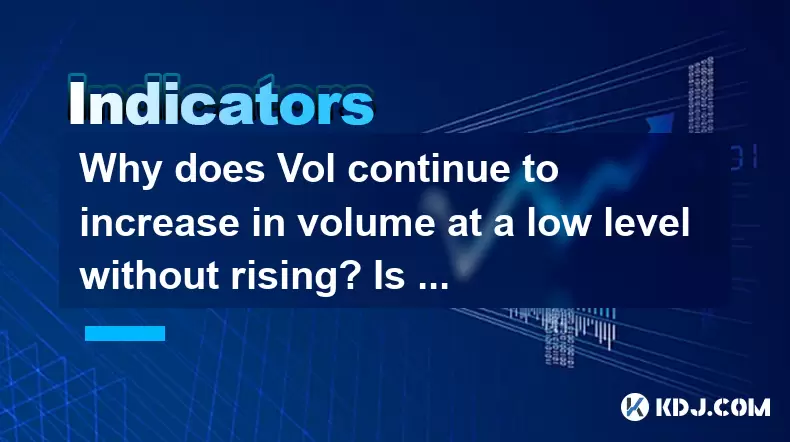
Introduction to Volume and Price Dynamics
In the world of cryptocurrencies, understanding the relationship between trading volume and price movements is crucial for investors and traders alike. One common scenario that often puzzles market participants is when trading volume continues to increase at a low price level without a corresponding rise in price. This phenomenon raises the question: Is it accumulation? To delve deeper into this, we need to examine the mechanics of volume, the concept of accumulation, and the possible reasons behind such market behavior.
Understanding Trading Volume
Trading volume refers to the total number of shares or contracts traded for a particular asset within a specified time frame. In the context of cryptocurrencies, it indicates the level of activity and interest in a specific coin or token. High volume often suggests strong interest and can be a precursor to significant price movements. Conversely, low volume might indicate a lack of interest or a period of consolidation.
What is Accumulation?
Accumulation in the cryptocurrency market refers to the process where large investors or "whales" gradually buy up a significant amount of an asset over time, often at low prices. This strategy is typically employed when these investors believe the asset is undervalued and expect its price to rise in the future. Accumulation phases are characterized by sustained buying pressure, which might not immediately reflect in the price but can lead to increased volume.
Analyzing Volume Increase at Low Price Levels
When we observe an increase in volume at low price levels without a corresponding rise in price, it suggests several possibilities. One of the most common explanations is indeed accumulation. During this phase, large investors are quietly buying up the asset, which increases the trading volume. However, since the buying is spread out over time and often done in smaller increments, the price might not immediately reflect this increased activity.
Other Factors Influencing Volume and Price
While accumulation is a plausible explanation, it's important to consider other factors that might be at play. Market manipulation could also lead to increased volume at low prices. For instance, certain entities might engage in "pump and dump" schemes, where they artificially inflate the volume to attract more buyers before selling off their holdings at a profit. Additionally, news and market sentiment can influence volume without an immediate impact on price. Positive news might encourage more trading activity, but if the market is still digesting the information, the price might not move significantly.
Identifying Accumulation Patterns
To determine if the increased volume at low prices is indeed due to accumulation, traders and investors can look for specific patterns. Consistent buying at support levels is a key indicator. If the volume increases every time the price reaches a certain low level, it suggests that buyers are stepping in to accumulate the asset. Another sign is a gradual increase in volume over time without significant price spikes. This indicates a steady accumulation rather than a sudden surge in buying.
Using Technical Analysis to Confirm Accumulation
Technical analysis can be a valuable tool in confirming whether increased volume at low prices is due to accumulation. Volume indicators such as the On-Balance Volume (OBV) and the Volume Price Trend (VPT) can help traders understand the relationship between volume and price. If these indicators show a consistent increase in volume while the price remains stable or only slightly increases, it supports the accumulation hypothesis.
Additionally, chart patterns such as the accumulation/distribution line can provide further insights. If this line shows a steady rise over time, it suggests that the asset is being accumulated. Traders can also use moving averages to identify trends. If the volume is increasing while the price remains below key moving averages, it might indicate an accumulation phase before a potential breakout.
Case Studies of Accumulation in Cryptocurrencies
Examining real-world examples can help illustrate how accumulation plays out in the cryptocurrency market. For instance, Bitcoin's accumulation phase in 2018-2019 is a well-documented case. During this period, the price of Bitcoin remained relatively stable at low levels, but the trading volume consistently increased. This was largely attributed to institutional investors and large holders accumulating the cryptocurrency, which eventually led to a significant price surge in 2020.
Another example is Ethereum's accumulation in late 2020. Despite the price not rising significantly, the volume increased steadily, suggesting that investors were quietly accumulating the token. This accumulation phase preceded Ethereum's impressive rally in early 2021.
Practical Steps to Identify Accumulation
For traders and investors looking to identify accumulation in real-time, here are some practical steps to follow:
- Monitor volume at key support levels: Use trading platforms to track volume spikes when the price reaches certain lows. Consistent buying at these levels can indicate accumulation.
- Use volume indicators: Incorporate tools like OBV and VPT into your analysis to understand the relationship between volume and price over time.
- Analyze chart patterns: Look for patterns such as the accumulation/distribution line and moving averages to confirm accumulation trends.
- Stay informed about market sentiment: Keep an eye on news and social media to understand the broader context of volume increases. Positive sentiment can drive accumulation even if the price hasn't moved yet.
Conclusion
Understanding why volume continues to increase at low levels without a corresponding rise in price is essential for navigating the cryptocurrency market. While accumulation is a likely explanation, it's important to consider other factors such as market manipulation and news-driven sentiment. By using technical analysis and monitoring key indicators, traders and investors can better identify accumulation phases and make informed decisions.
Frequently Asked Questions
Q: Can increased volume at low prices be a sign of a bearish market?
A: While increased volume at low prices is often associated with accumulation and potential future price increases, it can also be a sign of a bearish market if it's driven by selling pressure. If the volume increase is accompanied by a downward trend in price, it might indicate that sellers are more active, and the market could be heading towards further declines.
Q: How can retail investors participate in accumulation phases?
A: Retail investors can participate in accumulation phases by gradually buying an asset at low prices, similar to how large investors do. They can use dollar-cost averaging (DCA) to spread out their purchases over time, reducing the impact of short-term volatility. Additionally, staying informed about market trends and using technical analysis can help retail investors identify potential accumulation phases.
Q: What are the risks of investing during an accumulation phase?
A: Investing during an accumulation phase carries several risks. One major risk is that the expected price increase might not materialize, leading to potential losses. Additionally, market manipulation can lead to false signals of accumulation, causing investors to buy into a scheme that ultimately fails. It's important for investors to conduct thorough research and use risk management strategies to mitigate these risks.
Q: How long can an accumulation phase last?
A: The duration of an accumulation phase can vary widely depending on the asset and market conditions. Some accumulation phases can last for months or even years, as seen in the case of Bitcoin's 2018-2019 accumulation. The length of the phase depends on factors such as investor sentiment, market conditions, and the overall economic environment.
Disclaimer:info@kdj.com
The information provided is not trading advice. kdj.com does not assume any responsibility for any investments made based on the information provided in this article. Cryptocurrencies are highly volatile and it is highly recommended that you invest with caution after thorough research!
If you believe that the content used on this website infringes your copyright, please contact us immediately (info@kdj.com) and we will delete it promptly.
- Shiba Inu (SHIB) in the Crypto Landscape: Community, Trends, and Future Outlook
- 2025-08-09 20:30:12
- Lasers in Modern Warfare: Iron Beam and the Future of Defense
- 2025-08-09 20:30:12
- Maxi Doge Presale: The Meme Coin That's Pumping Iron and Prices!
- 2025-08-09 19:10:11
- Rare Coin Warning: Don't Get Fooled by That 1p Coin!
- 2025-08-09 18:50:12
- Cardano, Unilabs, and Tron Price: Decoding the Latest Crypto Buzz
- 2025-08-09 18:30:12
- Aerodrome Finance: Price Targets and the Bullish Channel - What's Next?
- 2025-08-09 18:50:12
Related knowledge

What does it mean when the Triple Moving Average (TRIX) turns downward but the price doesn't fall?
Aug 09,2025 at 12:42pm
Understanding the Triple Moving Average (TRIX) IndicatorThe Triple Moving Average, commonly known as TRIX, is a momentum oscillator designed to filter...

What does it mean when the Williams' oscillator repeatedly hits bottoms but fails to rebound?
Aug 09,2025 at 09:28am
Understanding the Williams %R OscillatorThe Williams %R oscillator, developed by Larry Williams, is a momentum indicator used in technical analysis to...
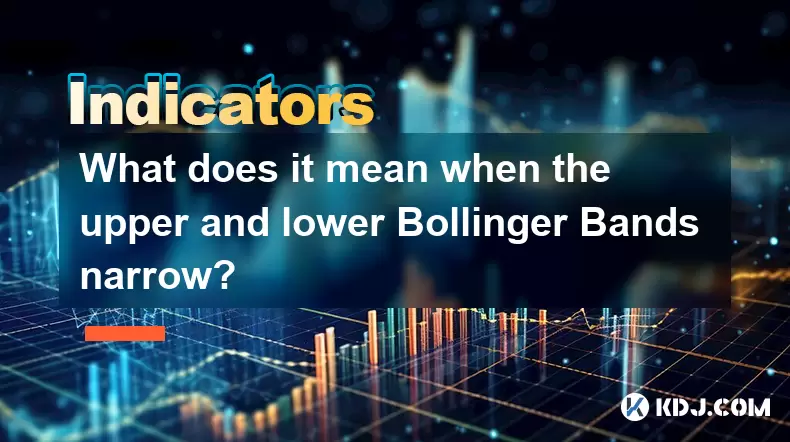
What does it mean when the upper and lower Bollinger Bands narrow?
Aug 09,2025 at 03:00pm
Understanding Bollinger Bands in Cryptocurrency TradingBollinger Bands are a widely used technical analysis tool in the cryptocurrency market, develop...
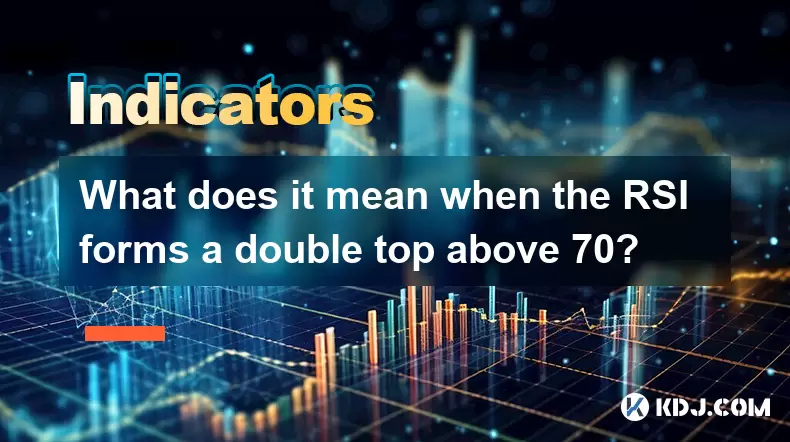
What does it mean when the RSI forms a double top above 70?
Aug 09,2025 at 05:50pm
Understanding the RSI and Overbought ConditionsThe Relative Strength Index (RSI) is a momentum oscillator that measures the speed and change of price ...
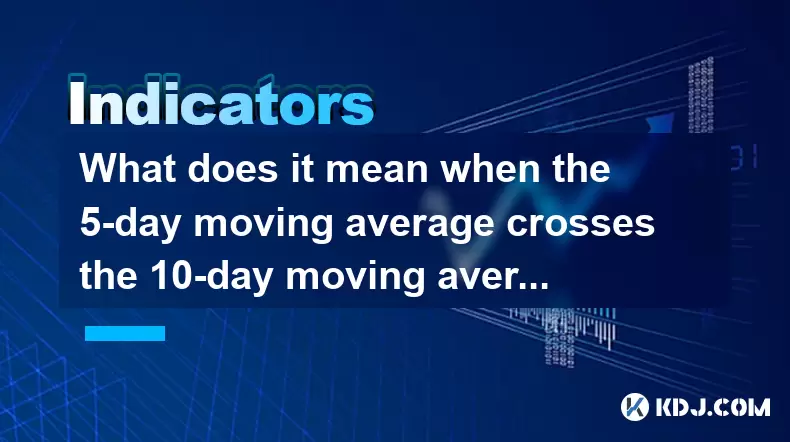
What does it mean when the 5-day moving average crosses the 10-day moving average but the 20-day moving average remains upward?
Aug 09,2025 at 03:35pm
Understanding Moving Averages in Cryptocurrency TradingMoving averages are foundational tools in technical analysis, especially within the cryptocurre...
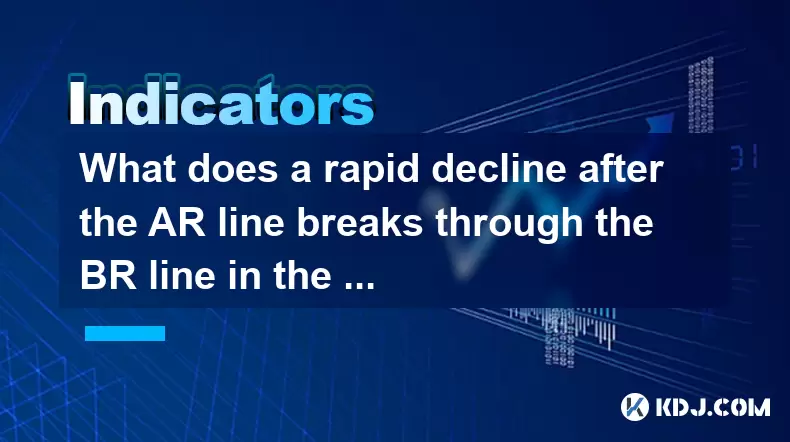
What does a rapid decline after the AR line breaks through the BR line in the ARBR indicator indicate?
Aug 09,2025 at 04:42pm
Understanding the ARBR Indicator ComponentsThe ARBR indicator is a technical analysis tool that combines two oscillators: the AR (Amplitude Ratio) and...

What does it mean when the Triple Moving Average (TRIX) turns downward but the price doesn't fall?
Aug 09,2025 at 12:42pm
Understanding the Triple Moving Average (TRIX) IndicatorThe Triple Moving Average, commonly known as TRIX, is a momentum oscillator designed to filter...

What does it mean when the Williams' oscillator repeatedly hits bottoms but fails to rebound?
Aug 09,2025 at 09:28am
Understanding the Williams %R OscillatorThe Williams %R oscillator, developed by Larry Williams, is a momentum indicator used in technical analysis to...

What does it mean when the upper and lower Bollinger Bands narrow?
Aug 09,2025 at 03:00pm
Understanding Bollinger Bands in Cryptocurrency TradingBollinger Bands are a widely used technical analysis tool in the cryptocurrency market, develop...

What does it mean when the RSI forms a double top above 70?
Aug 09,2025 at 05:50pm
Understanding the RSI and Overbought ConditionsThe Relative Strength Index (RSI) is a momentum oscillator that measures the speed and change of price ...

What does it mean when the 5-day moving average crosses the 10-day moving average but the 20-day moving average remains upward?
Aug 09,2025 at 03:35pm
Understanding Moving Averages in Cryptocurrency TradingMoving averages are foundational tools in technical analysis, especially within the cryptocurre...

What does a rapid decline after the AR line breaks through the BR line in the ARBR indicator indicate?
Aug 09,2025 at 04:42pm
Understanding the ARBR Indicator ComponentsThe ARBR indicator is a technical analysis tool that combines two oscillators: the AR (Amplitude Ratio) and...
See all articles

























































































